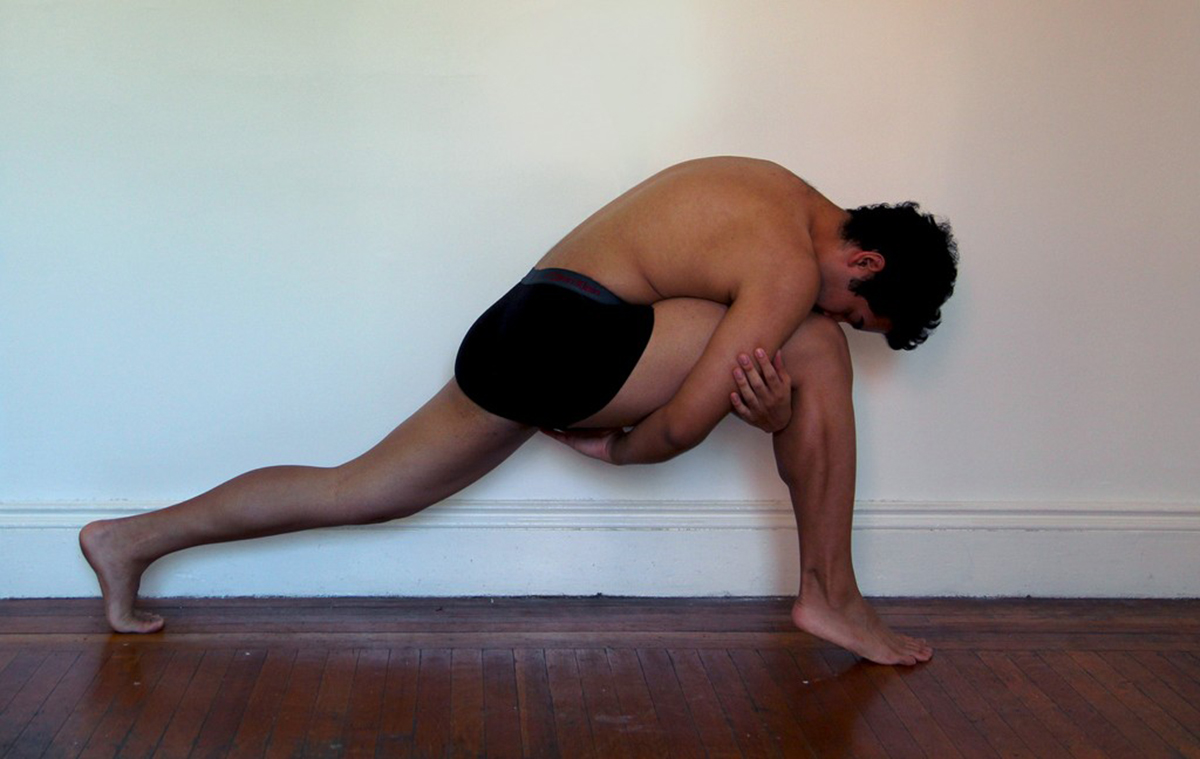Table of Contents
Lunges needn’t be boring.
Sure, the basic lunge as detailed at the start of this article doesn’t have that much about it, and once your proficient in those, you may find you want more of a challenge, but there are so many lunge variations out there you’re spoilt for choice.

For instance, the different types of weight you can use include –
- Bodyweight
- Dumbbells (just one or a pair)
- Kettlebells (just one or a pair)
- Barbells (regular barbell, or a specialty bar such as a cambered bar or a safety squat bar)
- Medicine ball
- Sandbag
The Reverse Lunge
The reverse lunge is performed in much the same way as a standard forward lunge, but instead of stepping forward and lunging down, you step backward and lunge down. These are a little more glute and hamstring dominant than forward lunges.
Deficit Lunges
Rather than just performing your lunges standing on the floor, grab a small platform (a low aerobic step is ideal,) and lunge from that. You can do this on forward or reverse lunge variations.
Walking Lunges
Bored of standing still? Then go for a walk.
With walking lunges you need a fair bit of room, but the fact you’re moving constantly not only makes them more taxing on your muscles, but increases the cardio demands of the exercise too. These should not be underestimated as a seriously-tough muscle builder – they were a favourite exercise of legendary bodybuilder Ronnie Coleman, who would perform walking barbell lunges along the length of the car park at his gym in Texas.
Lateral Lunges
If you need something that improves your mobility even more than a standard lunge, look no further than the lateral lunge. These involve stepping to the side and lunging down. Be warned – if your mobility isn’t top notch, these will be a real challenge at first.
Short Step Lunge
Simply shortening your stride can transform your lunge workout. A regular lunge hits your quads and hamstrings in a roughly equal proportion. Short step lunges are far more quad-dominant however, so if you want to really test your quads after your squats, leg presses and leg extensions, short step lunges are for you.
See Also: Push-ups For Strength
Long Step Lunge
If the short step lunge is more quad-dominant, then say hello to its hamstring-dominant best friend, the long step lunge. Aim to step 20 to 30 percent further than you would normally to give your hammies and glutes a good seeing too. You’ll get a great hip flexor stretch on this one too.
Curtsy Lunge
From a standing position, step one foot diagonally behind the other and drop into a lunge. The front knee should be in line with the front foot. This variation targets the glutes and inner thighs.
Jumping Lunge
Begin in a forward lunge position. Jump explosively into the air, switching your feet mid-jump to land in a lunge with the opposite foot forward. This plyometric exercise boosts cardiovascular fitness and builds explosive strength.
Forward Lunge
Begin by standing tall with feet hip-width apart. Step forward with one foot, lowering your body until both knees are bent at about a 90-degree angle. Ensure the front knee is directly above the ankle and the back knee hovers just above the ground. Push off the front foot, returning to the starting position. Alternate legs.
There you have it – loads of new lunge variations to add into your routine. Pick one, perform it for a few weeks, while adding weight and/or reps every session, then move on to another, and watch your leg strength soar.
- Photo courtesy of U.S. Naval Forces Central Command/U.S. Fifth Fleet by Flickr : www.flickr.com/photos/navcent/9723680634
- Photo courtesy of David M by Flickr : www.flickr.com/photos/againstthebrilliance/7123251089
- The Hardcore Lunge, by Mike Robertson, Published February 12, 2007, http://www.t-nation.com/free_online_article/sports_body_training_performance/the_hardcore_lunge

